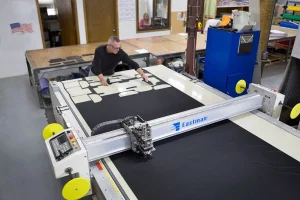In the realm of tech manufacturing, automated cutting tools play a pivotal role in enhancing efficiency. By harnessing automation, manufacturers can surpass the limitations of traditional cutting methods, known for their inefficiencies. As we explore the benefits of automated cutting tools, it becomes evident that the impact is profound. These tools not only boost productivity and precision but also drive down labor costs and enable scalability. The transformative benefits are wide-ranging, making it essential for businesses to unlock their full potential.
Key Takeaways
- Automated cutting tools enhance efficiency in tech manufacturing by surpassing the limitations of traditional cutting methods, boosting productivity and precision.
- By minimizing labor costs and downtime, automated cutting tools enable businesses to allocate resources more effectively and increase profitability.
- With automated cutting tools, manufacturers can achieve consistent cutting quality, minimizing material wastage and improving product uniformity.
- By streamlining processes and reducing production time, automated cutting tools increase output capacity and minimize errors.
- Scalable and flexible, automated cutting tools can adapt to varying production demands, handle diverse materials, and quickly set up for different projects.
Inefficiencies in Traditional Cutting Tools
Traditional slicing tools, long the mainstay of tech manufacturing, have been plagued by inefficiencies that hinder productivity and drive up costs, including manual operation, limited precision, and excessive material waste. These drawbacks not only reduce yield but additionally compromise product quality, making them an unsustainable choice for modern tech manufacturing.
Frequently Asked Questions
Can Automated Cutting Tools Be Integrated With Existing Manufacturing Systems?
Yes, automated cutting tools can be integrated with existing manufacturing systems through standardized interfaces, such as APIs or PLCs, enabling smooth data exchange and efficient production workflows.
How Often Do Automated Cutting Tools Require Maintenance and Servicing?
Automated cutting tools typically require regular maintenance every 1,000 to 2,000 operating hours, involving tasks such as lubrication, cleaning, and software updates to guarantee peak performance and extend their lifespan.

Are Automated Cutting Tools Suitable for Small-Batch or Prototype Production?
Yes, automated trimming tools are suitable for small-batch or prototype production, offering flexibility and precision, allowing for efficient production of limited quantities or custom parts, and facilitating rapid prototyping and design iteration.
Can Automated Cutting Tools Be Programmed for Custom or Complex Shapes?
Automated cutting tools can be programmed for custom or complex shapes through advanced computer-aided design (CAD) software and computer numerical control (CNC) systems, enabling precise and efficient production of elaborate designs.
Do Automated Cutting Tools Require Specialized Operator Training or Expertise?
Automated cutting tools typically require minimal operator training, as they often feature intuitive interfaces and automated processes, allowing operators to focus on high-level tasks, rather than manual cutting techniques.
Conclusion
In summary, the integration of automated cutting tools in tech manufacturing yields substantial benefits. Enhanced efficiency, precision, and accuracy gains lead to improved product performance and reduced material waste. Labor costs and downtime are diminished, while scalability and flexibility in production empower manufacturers to adapt to changing demands. By harnessing automated cutting tools, manufacturers can achieve operational agility, increased production capacity, and faster time to market, ultimately transforming the manufacturing industry.
You May Also Like:



